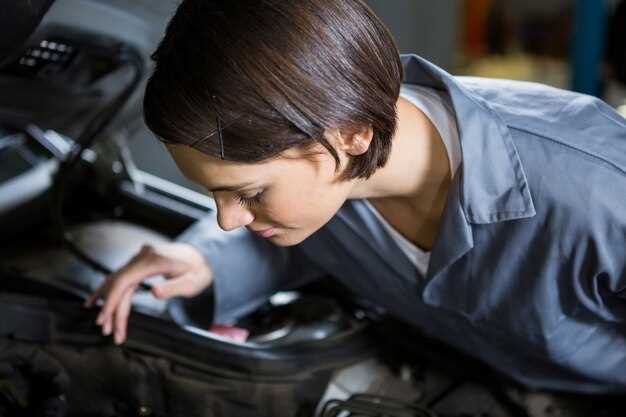
Brakes are one of the most critical components of your vehicle, ensuring safety on the road. Ignoring early signs of brake failure can lead to disastrous consequences, including accidents and costly repairs. Understanding the warning signals your brakes may exhibit can help you take proactive measures to avoid potential hazards.
Many drivers are unaware of the subtle indicators that suggest their braking system may be failing. Noises, vibrations, and warning lights are just a few of the signs that should not be overlooked. Recognizing these early symptoms allows for timely inspections and maintenance, ultimately prolonging the life of your braking system and enhancing your safety.
In this article, we will explore the common early signs of brake failure, providing you with the knowledge to identify problems before they escalate. By being vigilant and informed, you can ensure that your vehicle remains safe and reliable on every journey.
Unusual Noises Indicating Brake Issues
Hearing strange noises while braking can signify potential issues with your vehicle’s brake system. Pay attention to these sounds, as they can help you identify problems early and prevent dangerous situations.
Squeaking or Squealing: This high-pitched noise often occurs when brake pads wear down. Most modern brake pads come with a built-in wear indicator that squeals when replacement is needed. If you hear this sound, it’s essential to inspect the pads and replace them if necessary.
Grinding: A grinding noise usually indicates that the brake pads have worn completely down, causing metal-to-metal contact between the rotor and caliper. This severe issue can damage brake components, leading to costly repairs. If you hear grinding, seek immediate service.
Thumping or Bumping: Unusual thumping or bumping sounds can indicate warped rotors or loose caliper components. This may cause uneven braking performance and can compromise your vehicle’s safety. Prompt inspection is recommended.
Pulsating or Vibrating: When the brake pedal pulses or vibrates during application, it might signal warped rotors or issues with the brake calipers. This can affect your stopping power and should be checked by a professional without delay.
Hissing or Air Leaks: A hissing noise, particularly when pressing the brake pedal, may suggest a leak in the brake booster or air lines. This can lead to brake failure or reduced effectiveness, requiring immediate attention.
Regular maintenance and attention to unusual sounds can help you maintain your vehicle’s safety and performance. If you experience any of these noises, consult a trusted mechanic to diagnose and remedy the situation promptly.
How to Assess Brake Pedal Behavior

Assessing brake pedal behavior is crucial for detecting early signs of brake failure. Start by observing the pedal’s response during regular driving conditions. Press the brake pedal gently and note its feel. A healthy brake pedal should have a firm, responsive feel without excessive travel.
Next, monitor for any unusual sensations when applying the brakes. If you feel a pulsing or grinding sensation, it may indicate warped rotors or damaged brake pads. Additionally, pay attention to any softness in the pedal. A spongy feeling can suggest air in the brake lines or low brake fluid levels, both of which require immediate attention.
Next, check the pedal’s height. If the brake pedal is positioned significantly lower than the accelerator pedal, this could signify a problem with the brake system. Also, consider the amount of force needed to engage the brakes. If you must press down excessively hard to slow your vehicle, it is a warning sign that brake components may be worn.
Finally, observe the brake pedal behavior over time. Consistent changes in pedal feel or height indicate a developing issue that should not be ignored. Regular maintenance and prompt assessments can help ensure your braking system operates effectively. If you notice any irregularities, have a professional inspect your brake system immediately.
Visual Inspection Techniques for Brake Components

Regular visual inspections of brake components are essential for maintaining vehicle safety. By understanding what to look for, drivers can identify potential issues before they escalate into serious failures. The following techniques can be employed to ensure the integrity of your braking system.
Start by examining the brake pads. Look for signs of uneven wear, such as thinning on one side. A pad worn excessively on one side may indicate underlying problems, such as a caliper sticking. Additionally, check for any scoring or grooves on the surface of the pads; these can compromise braking effectiveness.
Next, inspect the brake rotors. Look for discoloration, cracks, or deep grooves. A warped rotor can produce vibration during braking, indicating it may need to be resurfaced or replaced. Ensure the rotor surface is smooth and free from debris; rust can also negatively impact braking performance.
Review the brake lines for any signs of wear or damage. Check for leaks, which may present as wet spots or fluid accumulation around the fittings or along the line. Inspect connections for corrosion and straightness. Dents or kinks in the lines can restrict fluid flow and affect braking pressure.
Inspect the brake calipers, checking for signs of leakage around the piston seals. A leaking caliper can lead to reduced braking force and uneven brake pad wear. Ensure that calipers are securely mounted and that the hardware is intact and without rust.
Examine the rear brakes if your vehicle has drum brakes. Remove the drum if necessary to check the brake shoes for uneven wear or excessive dust buildup. Look for any cracks or warping in the drum itself, as these can also impair braking performance.
Finally, do not overlook the brake fluid reservoir. Ensure the fluid is at the recommended level and look for any signs of contamination, such as discoloration or particulates. Replace fluid that appears dirty or has not been changed per manufacturer recommendations.
By conducting thorough visual inspections of brake components regularly, drivers can identify potential issues early and address them proactively, ultimately enhancing vehicle safety and performance.





